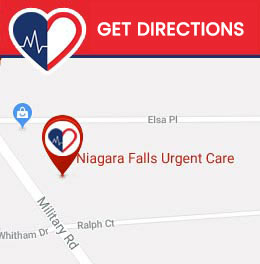Top Primary Care Physicians in Niagara Falls, NY
Niagara Primary Care is staffed with experienced primary care physicians specializing in preventative health care, regular check-ups, and extra care when needed. We are conveniently located at 3117 Military Road Suite 2, Niagara Falls, NY 14304. Contact us to request a same day appointment.


Table of Contents:
What is the difference between a cut, a scrape, and a laceration?
When does a cut, scrape, or laceration require stitches?
Can I treat a cut, scrape, or laceration at home?
Broken skin is one of the most common injuries sustained by people of all ages. These injuries may be classified as cuts, scrapes, or lacerations, depending on their depth and severity. Some of these may be treated at home, however it important to keep cuts, scrapes, and lacerations clean and sterile, as well as to monitor for any signs of infection. If you require treatment for a cut, scrape, or laceration, the doctors at Niagara Falls Urgent Care can help. We offer treatment 7 days a week with or without an appointment, so you can see a professional who can appropriately evaluate your injury. In addition to sterilization, we can provide suturing if your injury requires stitches.
A scrape is generally the least severe of these injuries. An abrasion happens when the skin is torn, but not missing, due to friction or rough contact. Scrapes can be painful and inflamed, but are typically easy to treat at home as long as they do not become infected. A cut refers to an injury that occurs when the skin has been broken by a sharp object such as a glass or a kitchen knife. Cuts can vary greatly in severity depending on their length and depth. A laceration is a severe cut that includes torn or jagged edges. Lacerations may also include bruising or be irregular in shape.
There are many ways to close an open wound. After a thorough cleaning and sterilization, a cut or laceration may be closed with staples, a pressure dressing, bandages, medical adhesive, or stitches. Your doctor will decide which of these methods is best suited for your injury. Stitches can help support the injured area as the skin heals as well as decrease the chance for infection and scarring. Stitches are often used for cuts that are deep, wide, or more than half of an inch long. Many lacerations will require stitches due to the ragged or torn edges they often have. Stitches are frequently implemented to help close cuts or lacerations that do not stop bleeding.
Superficial cuts and scrapes can often be treated at home with proper care. It is important to make sure that your hands are thoroughly cleaned before attempting to treat any wound at home. The first step should be to stop bleeding at the sight of the wound. If you cannot stop the bleeding or it is excessive, you should visit a doctor immediately. The wound should be cleaned under running water and soap around the wound and then dried before applying an antibiotic ointment. The wound should then be covered with gauze or bandage, which should be changed regularly. Following home treatment, any wound should be carefully monitored for signs of an infection including swelling, pain that does not dissipate, redness, and pus. If you notice any signs of infection, you should see a doctor as quickly as possible, as antibiotic medication may be required to ensure it does not result in further complications.
If you have a cut, scrape, or laceration that requires medical attention from a doctor, come to Niagara Falls Urgent Care to receive the treatment you need to heal.







